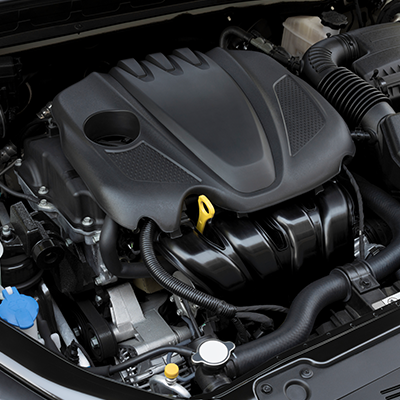Rocker cover gasket replacement

The valve cover gasket seals the joint between the valve cover (covering the valve control system and the camshafts) and the cylinder head. It prevents the oil lubricating these elements from leaking. The gasket gradually wears and needs replacing. Ignoring oils leaks may result in a significant oil loss and cause permanent engine damage
Tips
- The gasket and its replacement are cheap, whereas ignoring oil leaks may cause serious and costly engine damage
- Draining the engine completely helps verify its tightness after a gasket replacement
- Top the engine up with oil after each gasket replacement
Scope of services
- Removing the valve cover
- Removing a worn gasket from the cover and the cylinder head
- Fitting a new gasket and bolt washers in
- Fitting the cover and the bolts back in place using a torque wrench
- Topping the engine up with oil
Find a car workshop
Check out our workshops that offer the service rocker cover gasket replacement in some of the biggest cities in your country
Additional info about the service
What is the rocker cover?
The rocker cover is that part of the engine, which protects the timing gear and the valve control gear. As these components are lubricated by means of engine oil, the rocker cover also prevents it from coming out. The contact point between the rocker cover and cylinder head is secured by means of a gasket.
When should the rocker cover gasket be replaced?
The gasket gradually becomes brittle and loses its flexibility, causing oil to ooze out from under the rocker cover. If this is the case, the gasket must be replaced.
How is the rocker cover gasket replaced?
Replacing the gasket requires removing the rocker cover from the cylinder head by disconnecting the high voltage cables running through the cover and removing the bolts holding the cover to the cylinder head.
Then the cover is removed, cleaned off of the gasket leftovers, and its mounting surface is checked for damages which could cause harm to the new gasket. Then the cylinder head mounting surface is cleaned. Next, a new gasket is fitted onto the cover, along with new seals around the cover bolts. Subsequently, the cover is fitted back onto the head and fastened to it by means of the bolts. It is important to properly tighten the bolts to ensure that the connection is tight enough and that it doesn't damage the new gasket.
What else to keep in mind?
If the gasket requires changing because of leaks, following the replacement you should check the engine oil level, as a significant portion of it may have leaked out."